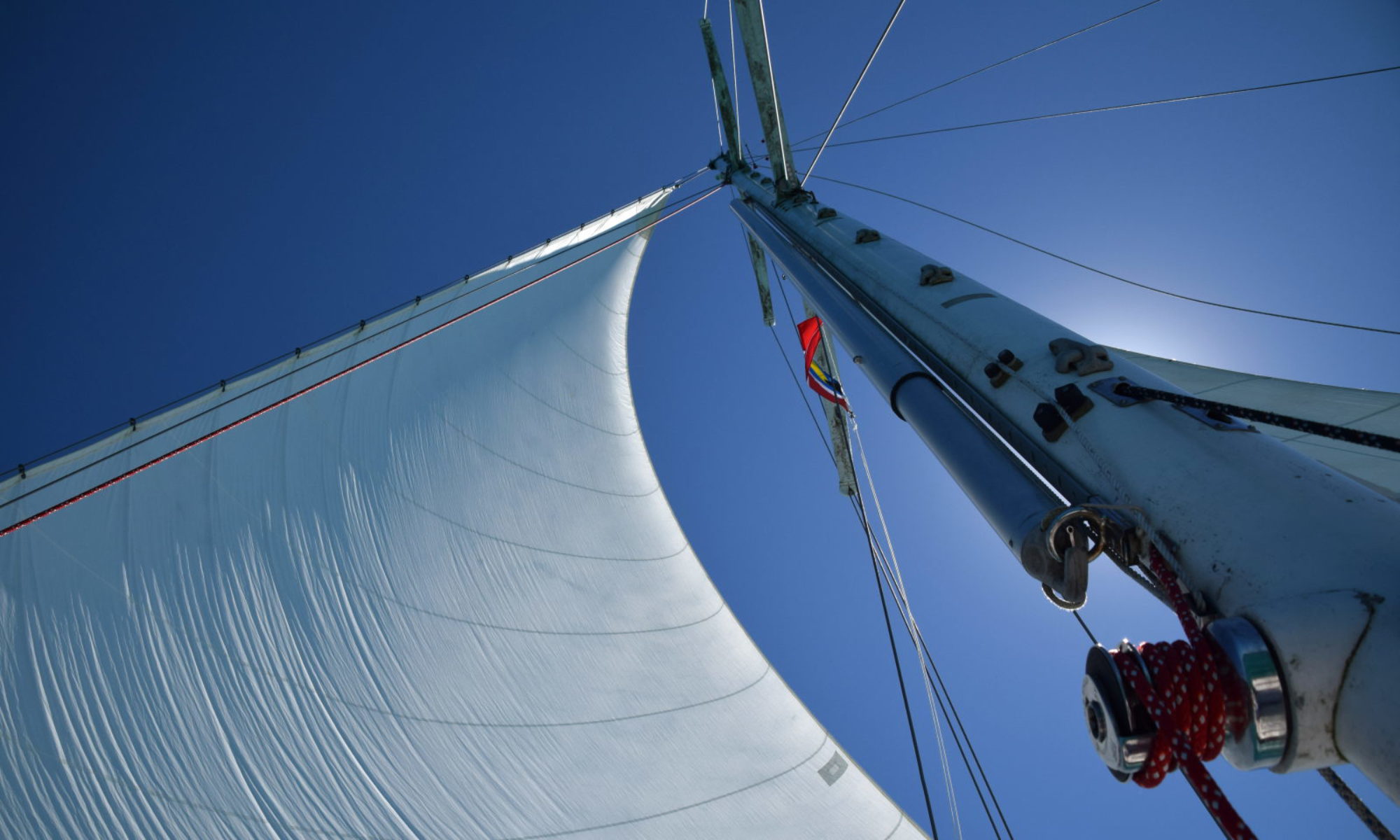Quit jobs: check. Pack up stuff out of Lindsey’s parents’ house: (mostly) check. Move stuff into Paul’s parents’ house: check. Head to New Bern, meet with mechanic, pick up sail, pack more food than you thought possible into boat, check out the birthplace of Pepsi, learn about how to make money blogging from a dude at the marina, untie the lines, and go: check!

Paul’s mom bravely agreed to join us for this (still cold) part of the trip. Paul and I actually really enjoyed the first part of the Intracoastal Waterway (ICW) and were excited to share this part of it with her. And it didn’t disappoint! We saw a dolphin as soon as we neared the ocean at Morehead City the first day, and we saw dolphins nearly every day for the rest of the ICW. One day we headed out to sea (St Helena Sound) to avoid a shallow part of the ICW, and we saw about 40 dolphins – they swam alongside us, watching us curiously just as we watched them.






We traveled typically 40-60 miles a day and anchored most nights. We anchored in fog, in swamps, in marshes, and in front of houses. I have never seen so many waterfront mansions in my life. We saw sunken boats. By Camp Lejuene, we watched ospreys fly (both the military aircraft and the birds) and experienced our first crazy storm (all wind, no lightning). At Charleston, we crossed paths with cargo ships. At Elliot’s Cut, the current helped us to set our boat’s speed record – 8.8 knots (~11 mph – not exciting for you but very exciting for us)!






We made a friend named Steven on the radio, a solo-sailor that had moved to the east coast from California. Steven was having a hell of a time on the ICW. He’d already grounded and called Sea Tow (like AAA for boaters) several times. He crossed the Abermarle in December, ran aground, and was frozen in for 3 weeks. We’ve kept in touch, relaying messages about the shallow spots we find.
Speaking of which, we ran aground! They say on the ICW there are sailors that run aground and those that lie about it. First at Lashallotte Inlet, which we knew was a problem spot, we tried to take the Coast Guard’s advice to “hug the reds” – well, we hugged too close, the incoming tide pushed us aside, and we were in the sand. Construction workers watched from the docks while we bounced around for half an hour until the tide rose and we were off. Our second grounding was approaching Charleston, in the middle of the channel according to the chartplotter, but at a spot known for shoaling (that I read about only afterwards, oops). Once again, it was low tide, so 30 minutes later we had more water and with the aid of some powerboat wakes, we bounced back into deeper water. This part of the trip was definitely more stressful at low tide, and we were thankful many times we only draw 4 feet. Eventually we started using the Army Corps of Engineers surveys in combo with Robert Sherer’s ICW book – this was insanely helpful because often the chartplotter and charts are just wrong.

Turtles, bald eagles, herons, egrets, owls, pelicans – armed with binoculars, Naomi became the official wildlife spotter.




We spent Valentine’s Day at the Myrtle Beach Yacht Club and treated ourselves to SHOWERS (!!!) and a fancy dinner ashore.


We weren’t on land again until the 19th when we hit Port Royal (near Beaufort), SC. Why is SC so damn charming? Spanish moss, little pastel houses, historic buildings made of oyster cement, egrets walking through the tall grass. And it was even warm here! If not for the biting gnats, it would have been near perfection.

This was Naomi’s departure point – but not before visiting the Kazoo Museum. Yes, the Kazoo Museum! It’s more like a gift shop in their warehouse, but it was well worth the laugh and we purchased one to be the waking alarm for our onboard guests (here’s looking at you, Stanley).
A few more days here to shop and take advantage of the marina’s free bikes and YMCA passes (hot tub, pool, and 2 saunas!), and we were back on the move.




